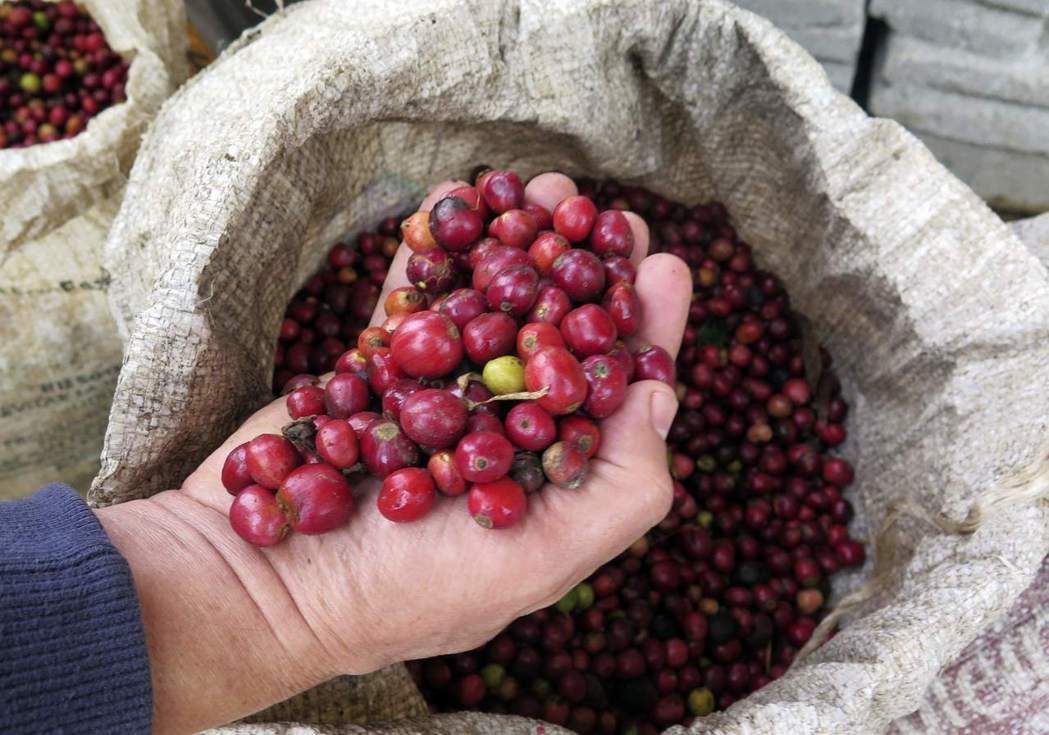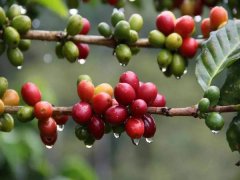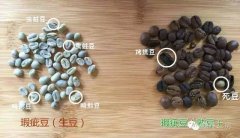Coffee planting: coffee farm treatment in Nicaragua

For professional baristas, please follow the coffee workshop (Wechat official account cafe_style)
The water tank in front of us is a density classifier (density syphon). No matter which method the coffee fruit will be treated later, all red fruits should be screened here first. And the workers are piercing left and right between us with arms on their heads? It is the coffee fruit that has just been picked from the mountain.
Stunted or inferior fruit floats to the end of the tank. The coffee collected from there is directly labeled as commercial grade and sent to the processing plant. As for those who sink underwater, they are eligible to participate in the next round of screening, but they will not be able to tell whether they can become boutique coffee until they are processed.
Density classifier screening good fruit
Some of the fruits that stand out from the classifier are transported to the depulper for peeling and pulp. The so-called "honey-treated" coffee (honey process) describes coffee as sweet as honey, not really processed with honey. Peeled but still sticky? The coffee core of the pulp is directly dried and some fructose will be absorbed by the core. This method has different names in different countries, such as pulped natural, semi washed and so on. Among them, in Costa Rica, where the government strictly controls the use of water, coffee farmers have created honey treatments named to retain "different thickness of flesh", including yellow honey (yellow honey) and red honey (red honey), which have the thinnest pulp layer, and black honey (black honey), the famous owner of last year's national COE champion La Brumas de Zurqui. Traditionally, Nicaraguan coffee is mainly washed with water, but because the trend of "honey treatment" has become popular in China and the United States in recent years, some batches are "tailor-made" at the request of buyers.
Most of the kernels after beating will stay in the cement pool for 8 to 12 hours of aerobic fermentation. At this stage, coffee beans are wrapped in shells like melon seeds (parchment coffee) until they are exported. On the outside, there is a layer of pectin (mucilage) that is difficult to scrape off with a knife. The biggest purpose of fermentation is to decompose and wash away pectin before it gets moldy, which is called fully washed processing.
Good bean precipitate trough bottom
Will the fermented coffee be filled with clear water in a long sink? Wash. The workers stirred the coffee in the sink like a dragon boat with wooden boards in hand.
"Why? The farther away from the sink, isn't it cleaner and of higher quality? " Are there any group members looking forward to it at the end of the slot? The current arrives.
The leader of the treatment group said with a laugh, "the heavier the beans are, the better the quality, so they precipitated at the bottom of the sink a long time ago." What floats to your side, we call it butter grade, which is used to make instant coffee! The best, on my side, is for the competition, followed by boutique and commercial drinking with local people. "
Cleaned beans and sun-treated fruits are transported to a treatment facility at the foot of the mountain for a drying process of 1 to 2 weeks. When the water content is reduced to about 12%, it will be packed into the warehouse. We will discuss the sun treatment and the equipment in the warehouse separately.
Photo: Patrick Tam (owner of the boutique coffee shop Knockbox, approved barista of the American Fine Coffee Association and European Fine Coffee Association, American CQI recognition cup tester, Cup of Excellence's first Hong Kong judge)
Important Notice :
前街咖啡 FrontStreet Coffee has moved to new addredd:
FrontStreet Coffee Address: 315,Donghua East Road,GuangZhou
Tel:020 38364473
- Prev

Coffee cultivation: harvest in Nicaraguan Coffee Farm
Professional barista communication please follow the coffee workshop (Wechat official account cafe_style) beat, clap, clap a series of claps, wake me up from my sleep. For a second or two, the darkness in front of my eyes did not become clear because of pupil dilation. At that moment, I remembered that I was in an isolated valley with no electricity. The sun went down for only a few hours, and there was no computer in the farm
- Next

What's the difference between fresh coffee beans and old beans?
Professional baristas Please follow the Coffee Workshop (official Wechat account cafe_style) Coffee enthusiasts gather at the shop every Friday night to taste the new coffee that comes on the shelves next week. Tonight, a self-baking enthusiast brought a handletter. This bag of 2012 Ethiopian Aricha coffee beans is a treasure that I have been reluctant to drink. I know you open baking every Friday.
Related
- Beginners will see the "Coffee pull flower" guide!
- What is the difference between ice blog purified milk and ordinary milk coffee?
- Why is the Philippines the largest producer of crops in Liberia?
- For coffee extraction, should the fine powder be retained?
- How does extracted espresso fill pressed powder? How much strength does it take to press the powder?
- How to make jasmine cold extract coffee? Is the jasmine + latte good?
- Will this little toy really make the coffee taste better? How does Lily Drip affect coffee extraction?
- Will the action of slapping the filter cup also affect coffee extraction?
- What's the difference between powder-to-water ratio and powder-to-liquid ratio?
- What is the Ethiopian local species? What does it have to do with Heirloom native species?

